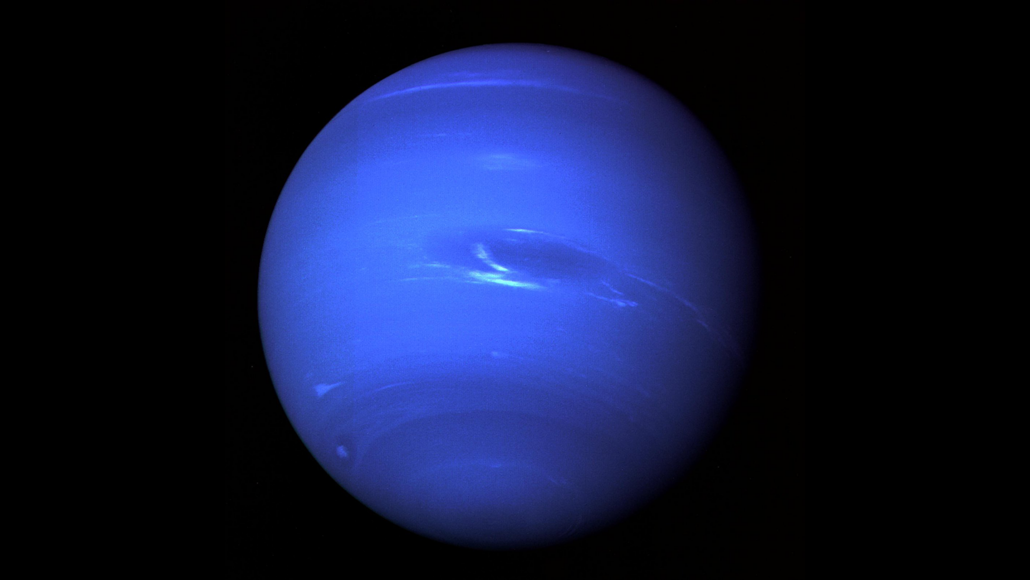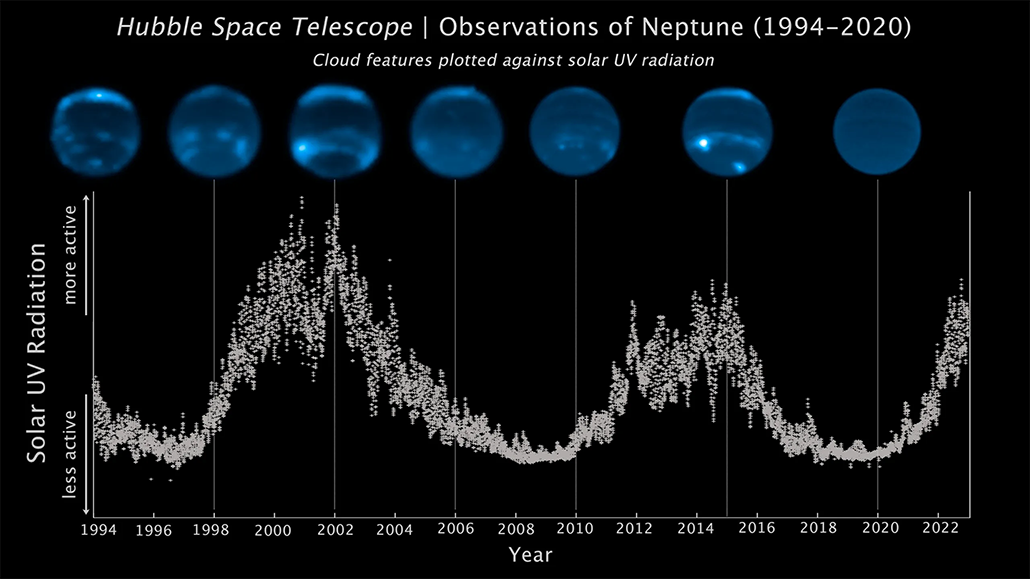Analyze This: Neptune’s cloud cover syncs up with the solar cycle
Sunlight-driven chemistry may puff up cloud cover on our solar system’s farthest planet

Solar energy plays a role in cloud cover and storms. It might seem that Neptune, our solar system’s farthest planet, would have a boring atmosphere because of its distance from the sun. But actually, the planet is windy, stormy and often cloudy.
NASA/JPL-Caltech
The sun’s rays may prompt cloudy days on our solar system’s farthest planet.
Neptune’s atmosphere swirls with storms and clouds. “It has one of the most active atmospheres of all the planets in our solar system,” says Erandi Chavez. They’re an astronomer at Harvard University in Cambridge, Mass. Neptune’s intense winds — the fastest in the solar system — and swiftly changing weather have inspired Chavez and others to watch the gas giant’s clouds. Recently, the researchers noticed something unusual.
The areas between the planet’s equator and the poles are usually quite cloudy. But in pictures taken in early 2020, the planet was strangely bare. The smidge of Neptune’s usual cloud cover was confined to near the south pole. “The fact that those are the only clouds left was like, ‘Oh, this is very weird,’” Chavez says.
To investigate, Chavez and their team looked to images taken by three telescopes. One provided snapshots going back almost 30 years. From the pictures, the researchers measured the clouds’ brightness, or how much sunlight they reflect. This provides a way to gauge how thick the clouds are. The researchers also mapped the clouds’ area across Neptune’s surface. Together these measurements captured Neptune’s cloud activity.
The sun’s light intensity is known to rise and fall every 11 to 13 years. Neptune’s cloudiness also seemed to vary over this timescale, suggesting that it’s linked to the solar cycle. The researchers shared their findings in the November issue of Icarus.
Chavez and their colleagues suspect sunlight triggers chemical reactions in Neptune’s atmosphere that form clouds. Neptune’s atmosphere contains molecules made of only carbon and hydrogen known as hydrocarbons. Methane is one example. Ultraviolet light from the sun can break methane gas apart, freeing its atoms to form other hydrocarbons. These heavier hydrocarbons can sink to cooler spots in the atmosphere, become liquid droplets and form clouds.
To catch the clouds’ connection to the solar cycle, the researchers needed decades of data. “Until now, we just didn’t have enough data to do that,” Chavez says. But there’s still more to learn about Neptune’s clouds. Sunlight didn’t explain some blips observed in the planet’s cloud activity.
All this atmospheric action on Neptune hints that there could be exciting things aloft on exoplanets, too. “Imagine what’s happening on all of these other planets orbiting other stars,” Chavez says. “Could they have clouds, too? Could they have big storms, too?”
Neptune’s clouds

Data Dive:
- Look at the data plotted in white. How does the sun’s ultraviolet, or UV, radiation change from 1994 to 2004?
- In which years is solar UV radiation highest? What is the length of time between these years?
- Look at the pictures of Neptune. In which years does Neptune have the most clouds? In which years does Neptune have the least cloud cover?
- How does the extent of clouds on Neptune relate to the level of solar radiation?
- Why did the researchers need decades of data to catch this link? (Hint: What do the data look like over shorter periods of time? For instance, within a two-year period?)







